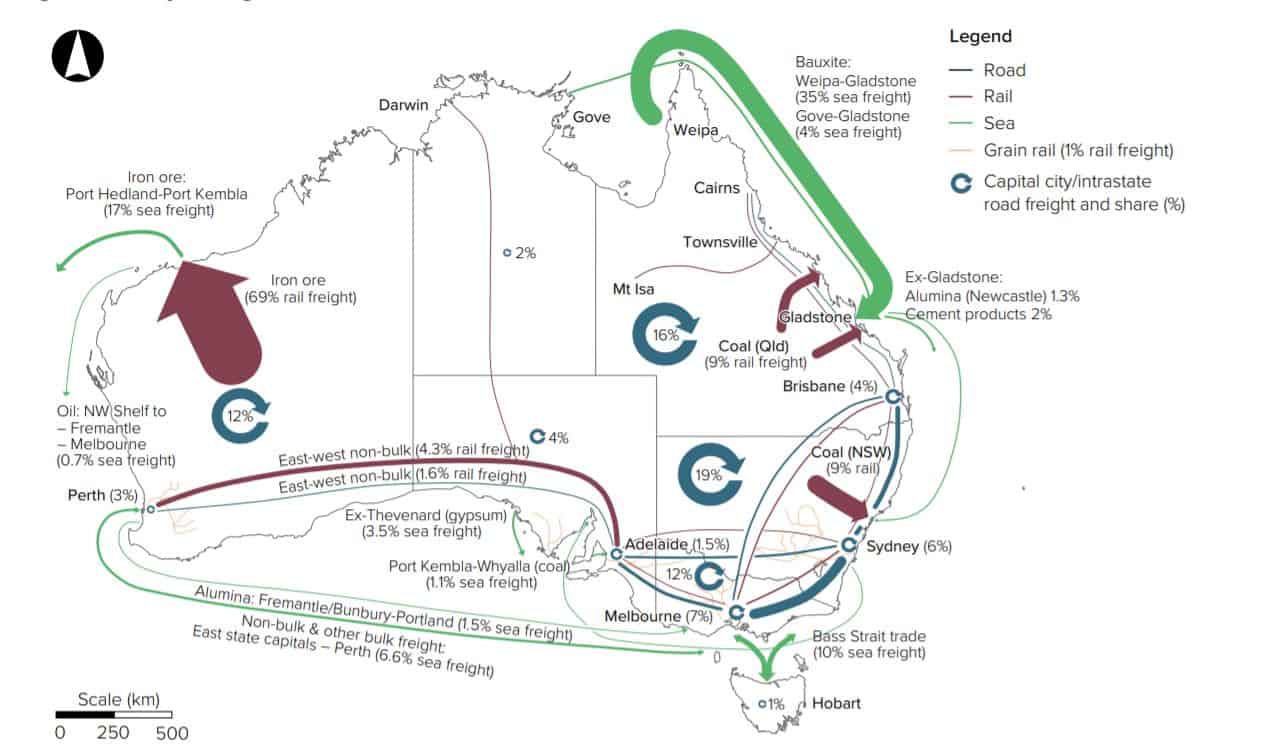Last year, the Australian Government released the Australian Infrastructure Audit 2019, which covered Freight Transport in the nation and its movements. The movement of freight in Australia involves a complex array of either import supply chains that carry imported or locally produced goods for domestic consumption, and also export supply chains too which has more components to it. With export supply chains, special consideration is made towards mineral and agricultural exports, and not to mention key facilities such as ports, intermodal terminals, airports that serve international trade. It should be noted that the sector for the transport of freight in Australia is ever changing, and there are many challenges and opportunities that arise with changing times.
Economic development in the Australian transport sector has continuously been shaped by innovation; therefore it’s safe to say that the current and future trends will have similar impacts as well. From electrification, automation and communication tech improvements, the way supply chain and the way transport and travel happen will be transformed. However, change can also be uncertain and due to its diversity and growing demands.
Global demand for exports from Australia has risen, with a majority of shipments being sent to Asia. The demands for imports have too increased with a growing number of deliveries to homes and offices. However, due to Australia’s varied climate, there are several challenges that arise depending on the numerous supply chains. Whilst major cities in Australia are hub points for processing points for shipments and deliveries within the supply chains, it can act as a bottleneck in terms of transport in terms of limiting key market access and increasing costs for consumers.
With Australia being well positioned for economic developments in Asia, its important for local infrastructure to keep pace with the improvements needed to ensure deliverability and efficiencies. The following image features the different flows of freight in Australia.
 It’s important for Australia to invest in infrastructure improvement in order to make use of Asia’s economic growth. By addressing the challenges faced in networks for freight in Australia, such as impact of congestion in urban areas, improving efficiencies in domestic and international freight networks, improving regulatory structures, investing in potential technological advancements, and providing improvements for seasonal agricultural flows, there could be many beneficial returns.
It’s important for Australia to invest in infrastructure improvement in order to make use of Asia’s economic growth. By addressing the challenges faced in networks for freight in Australia, such as impact of congestion in urban areas, improving efficiencies in domestic and international freight networks, improving regulatory structures, investing in potential technological advancements, and providing improvements for seasonal agricultural flows, there could be many beneficial returns.
How do you feel about the direction of freight in Australia, and how has it impacted you?

